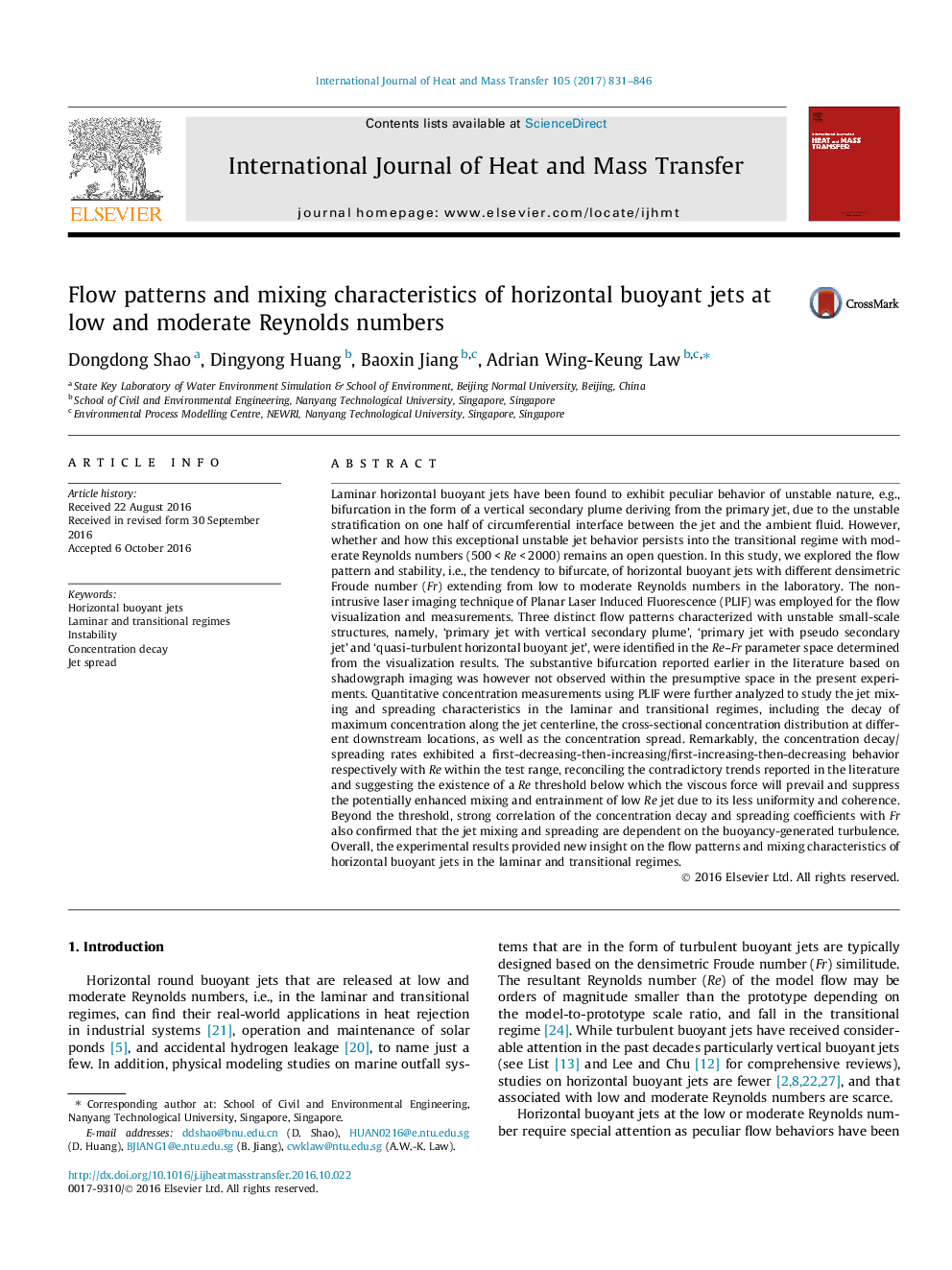| Article ID | Journal | Published Year | Pages | File Type |
|---|---|---|---|---|
| 4994736 | International Journal of Heat and Mass Transfer | 2017 | 16 Pages |
Abstract
Laminar horizontal buoyant jets have been found to exhibit peculiar behavior of unstable nature, e.g., bifurcation in the form of a vertical secondary plume deriving from the primary jet, due to the unstable stratification on one half of circumferential interface between the jet and the ambient fluid. However, whether and how this exceptional unstable jet behavior persists into the transitional regime with moderate Reynolds numbers (500 < Re < 2000) remains an open question. In this study, we explored the flow pattern and stability, i.e., the tendency to bifurcate, of horizontal buoyant jets with different densimetric Froude number (Fr) extending from low to moderate Reynolds numbers in the laboratory. The non-intrusive laser imaging technique of Planar Laser Induced Fluorescence (PLIF) was employed for the flow visualization and measurements. Three distinct flow patterns characterized with unstable small-scale structures, namely, 'primary jet with vertical secondary plume', 'primary jet with pseudo secondary jet' and 'quasi-turbulent horizontal buoyant jet', were identified in the Re-Fr parameter space determined from the visualization results. The substantive bifurcation reported earlier in the literature based on shadowgraph imaging was however not observed within the presumptive space in the present experiments. Quantitative concentration measurements using PLIF were further analyzed to study the jet mixing and spreading characteristics in the laminar and transitional regimes, including the decay of maximum concentration along the jet centerline, the cross-sectional concentration distribution at different downstream locations, as well as the concentration spread. Remarkably, the concentration decay/spreading rates exhibited a first-decreasing-then-increasing/first-increasing-then-decreasing behavior respectively with Re within the test range, reconciling the contradictory trends reported in the literature and suggesting the existence of a Re threshold below which the viscous force will prevail and suppress the potentially enhanced mixing and entrainment of low Re jet due to its less uniformity and coherence. Beyond the threshold, strong correlation of the concentration decay and spreading coefficients with Fr also confirmed that the jet mixing and spreading are dependent on the buoyancy-generated turbulence. Overall, the experimental results provided new insight on the flow patterns and mixing characteristics of horizontal buoyant jets in the laminar and transitional regimes.
Keywords
Related Topics
Physical Sciences and Engineering
Chemical Engineering
Fluid Flow and Transfer Processes
Authors
Dongdong Shao, Dingyong Huang, Baoxin Jiang, Adrian Wing-Keung Law,
